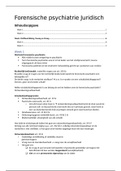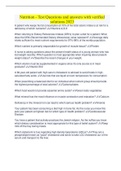Samenvatting
Summary Marketing Strategy: lectures | MSc Marketing Management | Erasmus University - RSM
- Instelling
- Erasmus Universiteit Rotterdam (EUR)
Summary of all the lectures of Marketing Strategy. This summary includes lecture notes and screenshots of the most important figures from the slides. I have updated the summary after the exam, so all important information is covered. The course Marketing Strategy was taught by Steven Sweldens a...
[Meer zien]













